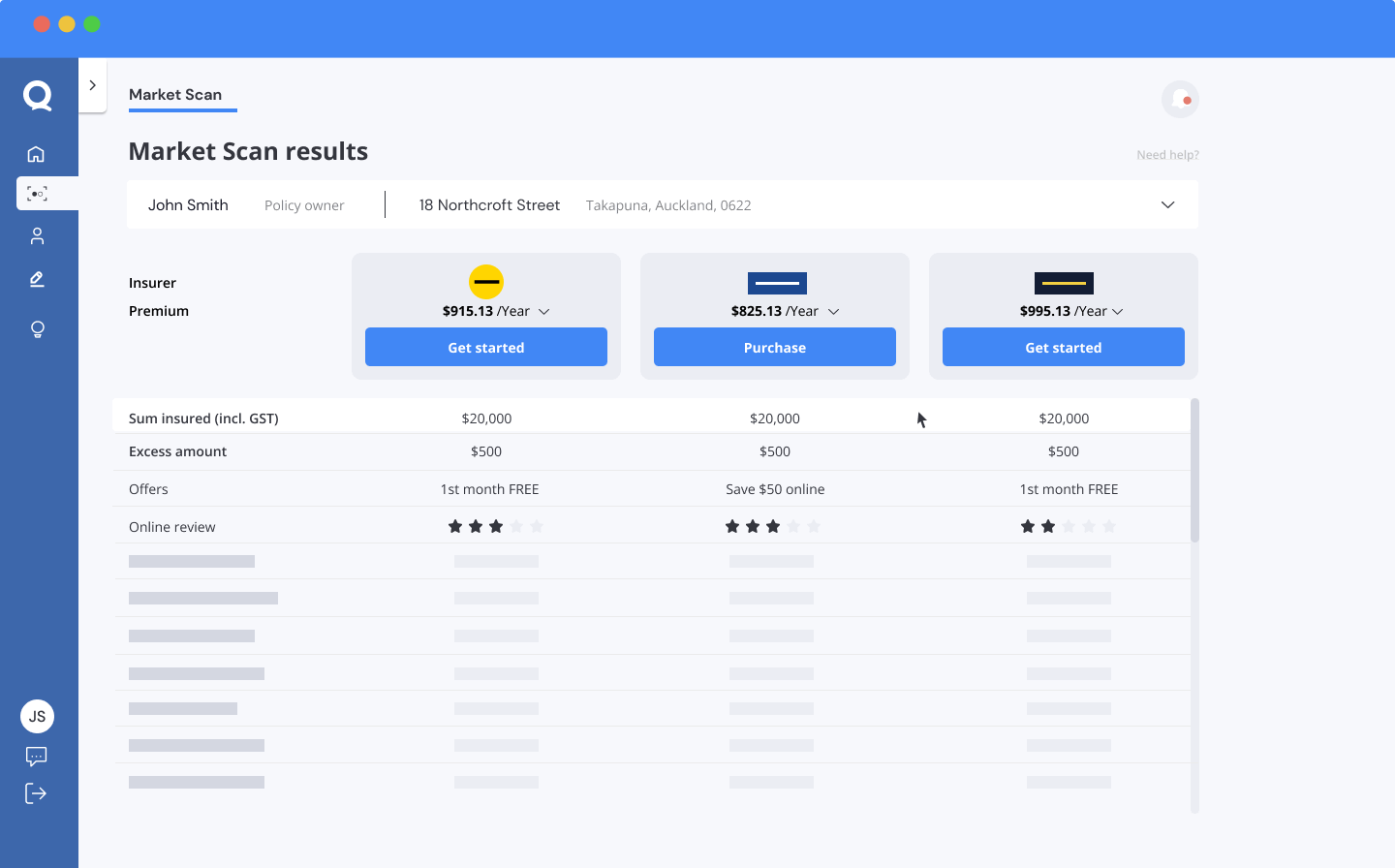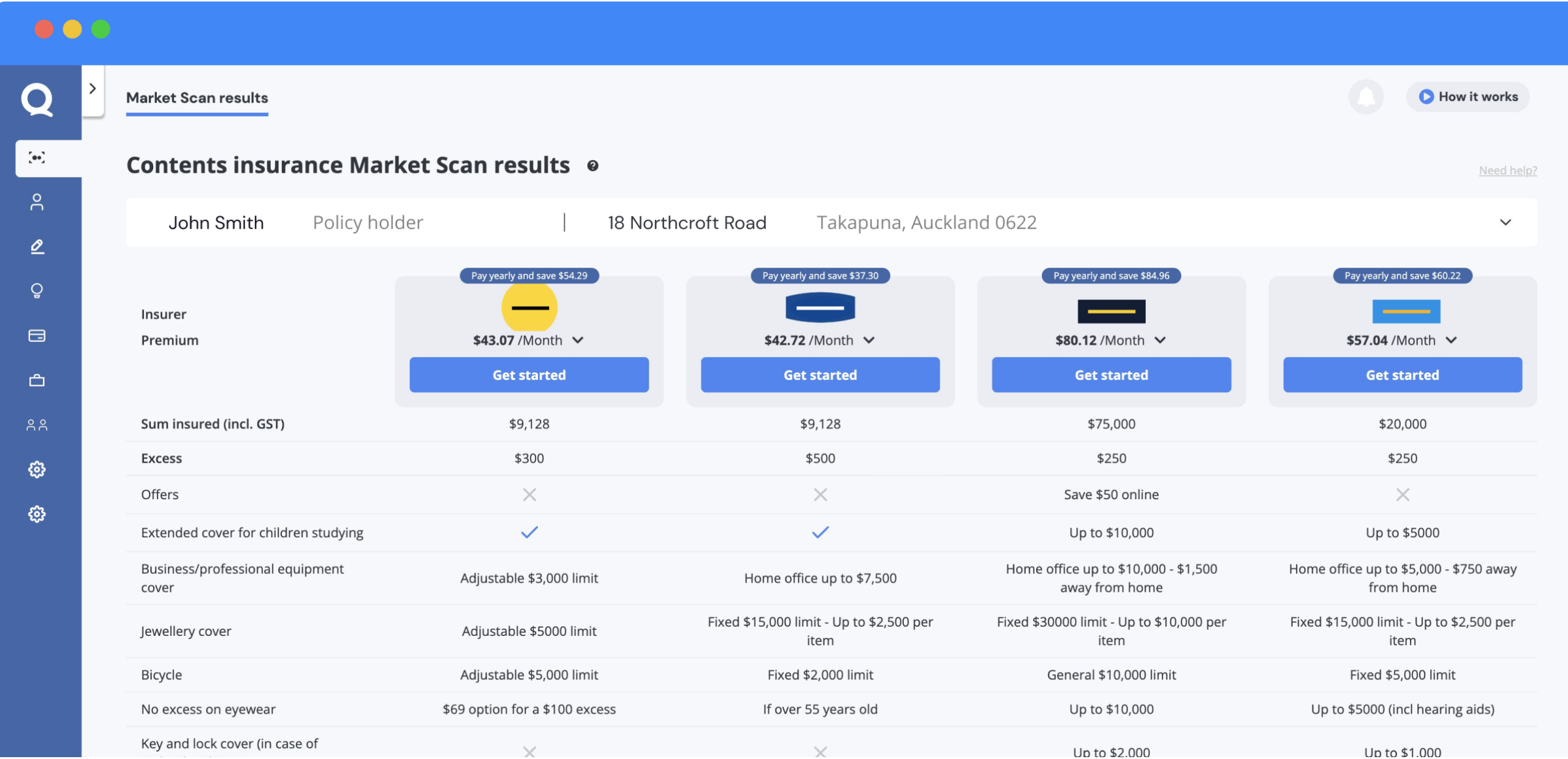How to Make an Insurance Claim

Needing to make a claim on one of your insurance policies can come as a bit of a shock.
After all, when you purchase an insurance policy, you’re protecting yourself against scenarios that you hope won’t come to pass, and probably prefer not to think about.
So, when life throws a curve ball your way and you’re suddenly faced with making a claim, it can feel a bit overwhelming if you’re not familiar with the process.
This article is going to walk you through the steps of making an insurance claim in New Zealand, so that, hopefully, the whole task feels less daunting.
We’re going to use contents insurance as an example but there are more tips on other forms of insurance later.

Step 1: Decide How You’d Like to Claim
Different insurance companies have different options when it comes to making a claim.
If you have been working with an insurance broker or advisor, then your first step should be to contact them, as it is part of their job to walk you through the claims process and take care of the details for you.
If you haven’t been working with a broker, then you’ll need to check the website of your insurance company to see what options are available to you.
Usually, you will have the choice of either starting the process over the phone, online, or by downloading and printing the required paperwork and posting hard copies to your provider.
You’ll need to have your policy on hand so that you can reference your policy number and double check what you’re actually covered for, the limits for various items, and any associated excesses.
Having your own dashboard set up with Quashed makes this part of the process much easier, as all of the different documents for your insurance policies are together in one place. You can also connect with your insurer directly via your Quashed dashboard, making it easy to start the claims process quickly, even if you only have your phone on you.
Whichever mode of communication you choose, don’t put it off. The sooner you make a claim, the better, no exceptions.
The average Kiwi household can save
$2,023.79 a year by shopping their insurance!
Find out how your renewal prices stack up against other options out there!
Step 2: Gather the Required Information
Once you have made contact with your insurance company, you will be assigned a claim number to identify your claim, and usually, a claims manager – the person who will be your main point of contact during the process.
Information about the event:
Depending on what you are making a claim for, you will need documentation and proof of what happened. This includes the location, date and time that the item(s) was/were lost, stolen or damaged.
It is always a good idea to take multiple photos or a video of items that are damaged.
If your house was burgled, there will likely be multiple items missing. It is important to report the burglary to the police as soon as you discover it. You will then need to make a list of every item that has been stolen and provide appropriate documentation for each item.
You may also need to provide proof of the break-in, such as photos of a broken window or door frame, and guarantee that your home was adequately locked and secure at the time of break-in. If you had declared that you had a security system when you purchased your policy, you may need to prove that the system was working at the time of the break-in.
Professional advice:
Your insurance company may ask you to get advice from an approved supplier regarding repair or replacement.
Proof of ownership:
If something has been stolen, ideally you will have photographs of the item from before it was stolen, but any additional documentation that helps prove ownership is helpful.
For example, provide a purchase receipt; a professional valuation; items that were related to the lost or damaged item that you still have in your possession, such as an instruction manual, charger, prescription for glasses, damaged bike, lock etc.
There is no such thing as too much information, so anything you can think of could help your claim.

Step 3: Pay Your Excess
The next step in the insurance claims process is to pay your excess. This is the contribution amount that you selected when you first purchased your insurance policy.
Usually, the higher the excess, the cheaper the premium. So, if you selected a higher excess amount to reduce your premiums, then you should be sure that the items you are claiming for are worth more than the excess you will have to pay.
If your insurance money is going towards repairs, then you will need to contribute the excess before your insurance company covers the remaining amount. If you are being paid out for the value of a lost or stolen item, then you will be paid the total amount once the excess has been deducted.
Step 4: Your Insurance Company Pays
Once your insurance company has received all of the required documentation and your excess, if applicable, they will resolve your claim. This could mean that the item is replaced with an equivalent new item, or the market value amount is paid to you, and it is it up to you to find a replacement.
The market value is calculated to be the retail value of your item immediately before it was lost, damaged or stolen, taking into account depreciation and wear and tear.
Other Forms of Insurance
House Insurance
House Insurance claims can be for partial amounts, for example, if part of your house is damaged due to an accident or water leak, or for the entire rebuild value of your house if it has been completely destroyed in a fire or natural disaster.
The process of making a claim for house insurance is similar to the process for contents insurance. You will need to provide a detailed description of what happened, along with the date and time of the incident. You may also need more professional opinions in the form of quoted costs for repair or rebuild. Any information you can provide, such as witnesses or statements from emergency personnel is also helpful.
As with contents insurance, be sure to take plenty of pictures, including of the surrounding land on the property if this was also damaged.
With larger scale claims, your insurance company will likely send an assessor to your property to view the damage and advise on repairs.
You should also take measures to ensure that your home is as secure as possible after the event, such as taping cardboard or plastic sheeting over broken windows, and removing any valuables from the property if the home is uninhabitable.
Shop smarter with Quashed
Insurance just got way easier with Quashed. Compare, shop and track all your insurance in one place.

Car Insurance
Car insurance claims can be made when your car is stolen or damaged in an accident. Third party car insurance can be claimed when you have damaged someone else’s car in an accident.
In all instances, you will need to provide evidence of the incident and the damages incurred. Photos and videos of the vehicle(s) are essential (ideally taken at the scene), a police report number if the police were involved, and eyewitness accounts are also helpful.
Be sure to exchange details with the drivers of any other vehicles involved, including their names, contact information, their insurers, and vehicle registration numbers.
If your vehicle is not drivable, you may need to arrange to have it towed to a secure location. Check your policy to see whether your insurer can arrange this for you.
Before starting any repairs, the supplier and planned work will need to be approved by your insurer. If you get repairs completed before getting them approved, you may not be reimbursed.
Note that any personal possessions in your vehicle will not be covered by your car insurance but may be covered by your contents insurance policy.
Health Insurance
The process for making a health insurance claim is slightly different from other forms of insurance.
You will need to contact your health insurance provider prior to receiving treatment to check whether the healthcare service you are getting will be covered. If it is not covered then you will need to pay yourself.
With some health insurance providers such as Southern Cross, if you receive care from an affiliated provider, then they can take care of the claims process for you. Southern Cross also have an online claims process through an app which makes the process easy and straightforward. For certain standard healthcare costs such as GP, dentist and physiotherapist visits, their Easy-Claim process means that your costs can be covered without having to fill out a full claims form. Lastly, you can claim reimbursement after already having paid for healthcare services yourself, by completing a post-claim form.

Market Scan quotes are direct from insurers
So you won’t pay more with Quashed

Extra Tips
Double Check Your Policy
If you’re not using an insurance broker, it’s extra important to make sure that you know exactly what and how much you’re covered for in your policy, and what excesses apply
It’s particularly important to understand the role that your excesses play. Sometimes it may not be worth making a claim if you have a large excess.
The More Documentation the Better
Assume that there is never such thing as too many photos when it comes to damage to your property. The more evidence you have of what happened, the better.
It’s important to take photos before you make any changes to the scene, including emergency repairs. Though it might be the last thing on your mind, taking photos should be the first thing you do (after contacting emergency services if that is needed).
If your property has been damaged by flooding, indicate how high the water reached in the photos.
Get Documentation of Each Event
Claims can get very complicated when multiple events occur at one property.
This was the case with the Christchurch earthquakes. It can be challenging for assessors to work out which damage to attribute to each event if you hadn’t taken enough photos of existing damage prior to the new event.
Use a Broker
As you can see, there are many different ways of going about making an insurance claim. The process varies a little from insurer to insurer, and depending on what kind of insurance you are claiming.
Using an insurance broker or adviser is the easiest way to ensure that you receive what you are entitled to when you make a claim. Insurance brokers work on your behalf and use their extensive understanding of the process to do the heavy lifting for you. Particularly in the case of health insurance, this means that you can focus on recovering and moving on with your life.
If you’re still on the fence, have a read of three reasons you should use an adviser.
In the meantime, be sure to set yourself up with an account here at Quashed and simplify your insurance needs – see your policies and premiums side by side on one platform, and compare your policies with others on the market to ensure you’re getting the best deal.

